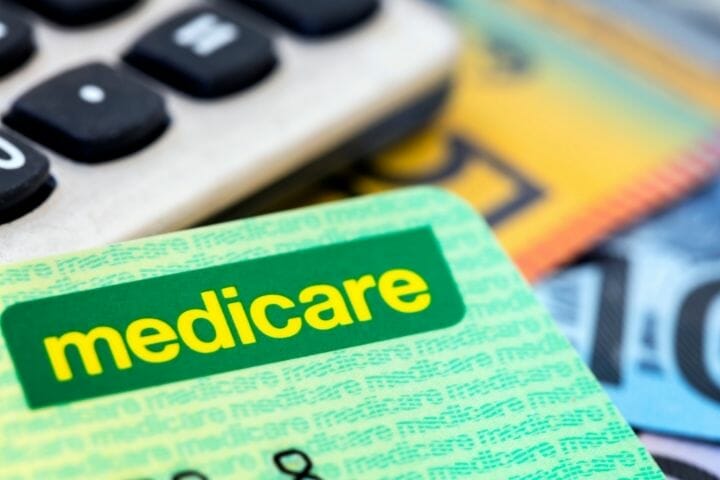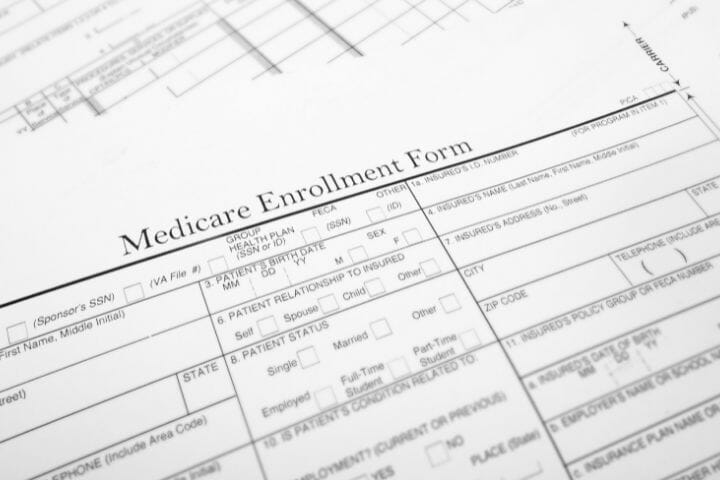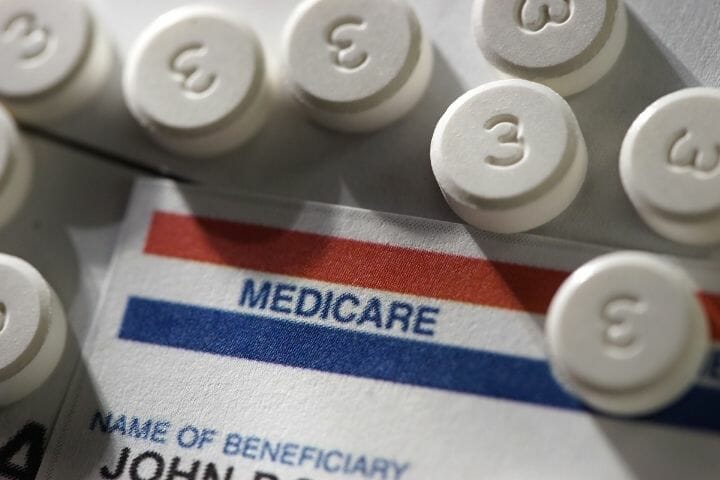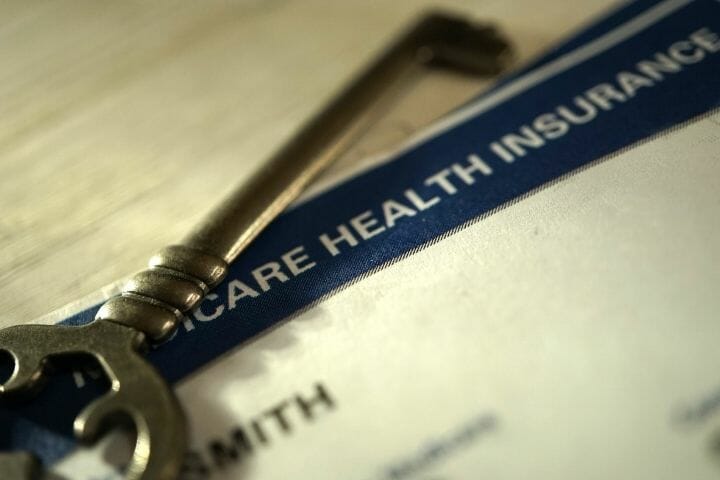Are you worried that your cost of medications is too high, and you might breach the donut hole limit for your Part D Medicare coverage? This article will give you all the relevant information and ways to avoid this from happening.
Contents
Medicare is a government-funded health insurance plan for people above 65 years old. This article focuses on Medicare part D or prescription drug coverage which is optional for senior adults.
Unfortunately, enrolling in this plan does not ensure that your medications will be covered completely in a year. It depends on the Phase of coverage you are in and your premium, copay, and deductible.
To know more about how drug coverage works in Medicare part D, read on.

What Is Medicare Part D?
Medicare part D is the prescription drug coverage plan that covers medications that are not covered under original Medicare (Medicare part A and Medicare part B). This plan is optional and sold by private insurance companies.
How Do I Enroll For Part D?
You are eligible for Part D Medicare coverage if you are enrolled in Medicare part A or B. The best time to apply for Medicare part D is three months before your 65th birthday and three months after your birthday.
If you fail to enroll in Medicare part D in these seven months, you can enroll each year in the general enrollment period, starting from January 1 and ending on March 31. Medicare Plan D is not mandatory but delaying may result in penalties once you need this coverage.
Which Medical Plan Should I Choose Under Part D?
You can choose a Medicare part D plan based on the medication you take, out-of-pocket expenses, premiums, and pharmacy availability. You have to enroll in a Medicare part D each year. So, if you are not satisfied with a plan in a year, you can change the plan next year.
What Is Formulary?
The Medicare Part D lists numerous drugs covered, also known as a formulary. The list of drugs includes both generic and brand-name drugs. The formulary may not always have the same drug prescribed by your health care provider but may include a similar option.
The formulary changes every year and within a year. So you need to check the list of medicines covered regularly.

What Are The Phases Of Part D Coverage?
Medicare part D or drug prescription coverage consists of 4 stages. The idea is to provide higher percentage coverage as your costs keep going up. As you move along the stages, the percentage of drug costs that insurance pays increases.
#1. Phase 1: Deductible stage
In this Phase, the Medicare beneficiary has to pay all the costs of his medications until he hits the deductible. The maximum deductible plan set by Medicare is $445 in 2021.
The deductible varies for each Part D plan, but no plan will have a deductible of more than $480 in 2022. Keep in mind, higher the deductible, the lower is the premium. If you expect little or no medication throughout the year, you might be better advised to take a plan with a high deductible and low premium.
#2. Phase 2: Initial Coverage Period
The initial coverage period starts after you hit your deductible limit. The Medicare beneficiary has to pay a copay or coinsurance for the medication prescribed by the health worker, but the cost varies according to the formulary.
Drugs in the lower tier will cost you less than drugs in a higher tier. You need to remember that each Medicare plan D creates its own formulary structure. It decides which drugs it will cover and which tier it will fall. In most plans, the beneficiary needs to pay 25 percent of the cost.

You will stay in this Phase until the total amount paid by you and your Medicare plan D do not go above a certain amount for medication. The threshold value in the initial coverage phase limit was $4130 in 2021 and will be $4,430 in 2022. The following table is an example of a formulary tier structure.
| Drug Tier | Type Of Drugs | Cost |
| Tier 1 | Most generic drugs | Lowest copay |
| Tier 2 | Some high-cost generic drugs, preferred brand name drugs, most common brand name drugs | Medium copay |
| Tier 3 | Non preferred brand name drugs | Highest copay |
| Tier 4 | Unique or very high-cost drugs | Coinsurance(percentage of the total drug cost) |
#3. Phase 3: Part D Coverage Gap
Once your total drug cost (including your out-of-pocket expense and what the plan pays for you) reaches a certain amount, you enter into the third Phase called the Donut Hole. In this Phase, the plan gets limited in terms of how much it can cover you’re for the cost of drugs.
Once you enter the coverage gap, you will not pay for more than 25 percent of the costs of both branded and generic drugs out of pocket.
However, almost the entire cost of the drug (what you pay and what the manufacturer contributes) will continue to add towards the out-of-pocket costs that will be considered for the next stage. Only the portion of the dispensing fee covered by your plan will not count towards your pay.
For example, if the cost of your drug is $50:
- You will pay 25% of this, which is $12.5, the manufacturer will pay 75% ($37.5)
- The Dispensing fee (let’s say $2) will also have two components: 25% that you have to pay (50 cents) and 75% paid by the insurer ($1.5).
Your payment + manufacturer payment + portion of dispensing fees you pay will count towards your out-of-pocket expense.
So in our example above, $12.5 + $37.5 + $0.50 = $50.5 will get added to your out-of-pocket expense and will help you reach the next stage of coverage.

#4. Phase 4: Catastrophic Coverage Phase
The Catastrophic Coverage Phase starts when your total out-of-pocket expense (which we explained above) crosses a certain amount ($6,550 in 2021 and $7,050 in 2022).
In this stage, the Medicare beneficiary has to pay only about 5 percent of the total drug cost, or $3.70 for generic drugs and $9.20 for brand name drugs, whichever price is higher for the remaining months in the year.
How To Avoid Medicare Donut Hole?
The main thing to do is to reduce your overall cost of medication so that you do not breach the initial coverage limit. Below are some suggestions on how you can do this
#1. Change in lifestyle
Change your lifestyle to stay physically and mentally fit! The easiest way to avoid the cost of medication is obviously to stay fitter.
Get proper sleep, eat a balanced diet and ensure that you do some form of physical exercise like yoga or walking every day. These changes have a chance to reduce your drug prescription bills.
#2. Try To Buy Generic Drugs
There are so many brand-name medications that have a generic alternative. The generic drugs have the same constituents as that brand-name medications and have the same effect.
You can ask your health provider to recommend generic options to lower the overall cost of medication. Studies show that generic drugs can be upto 54% cheaper than brand-name ones.

#3. Try to Order Medications by Mail and In Advance
Most Medicare Part D prescription plans offer a discount if the beneficiary orders three months supply by mail instead of 30 days supply at the pharmacy.
Sometimes the pharmacy near your location can offer 90 days supply as per your prescription at the same cost as you can get in the mail. So you need to compare various options and the price of each medicine when ordered in bulk so that you can save money and avoid donut holes.
#4. Use Prescription Assistance Programmes
Numerous programs help millions of people to reduce their medical bills. Some popular assistance programs are single care, GoodRx, Blink Health, Needy Meds, and others.
#5. Use Preferred Pharmacies
Most Medicare D plans have preferred pharmacies that offer medications at a lower cost for using their services.
#6. Consider Extra Help or State Assistance Programmes
The Extra Help program can assist you financially in taking advantage of the Medicare D plan, but you should have limited income and assets to apply.
#7. Plan Finder Tool
The plan finder tool helps a beneficiary find the exact information of the cost of the prescribed drugs and determine the plan and pharmacy. You have to fill in some confidential information, and the tool will direct you to the page of resources.
#8. Samples
You can ask your doctor about the samples of the prescribed drug. Some drug manufacturers provide some drugs with a limited quantity for promotion, and you can benefit from these samples.
Wrap Up
Medicare Part D is designed to considerably lower your drug costs. In most cases, this is true, but the costs are highest in the period known as the “Donut Hole,” the small band of about $2000 wherein you have to pay almost 25% of all drug costs.
You should try to avoid getting into the donut hole stage for your medication, especially if you do not have any chronic illness and are not on regular prescription drugs. We have explained what this band means and things you can do to avoid it.

We hope the article gave you all the necessary information. If you have further doubts or questions, please address them to us in the comments section, and we will try to answer them as quickly as possible.
As usual, if you found the article worth your while, please share it with others who are searching for similar information, and put it up on your social media accounts so that the word can be spread far and wide!
